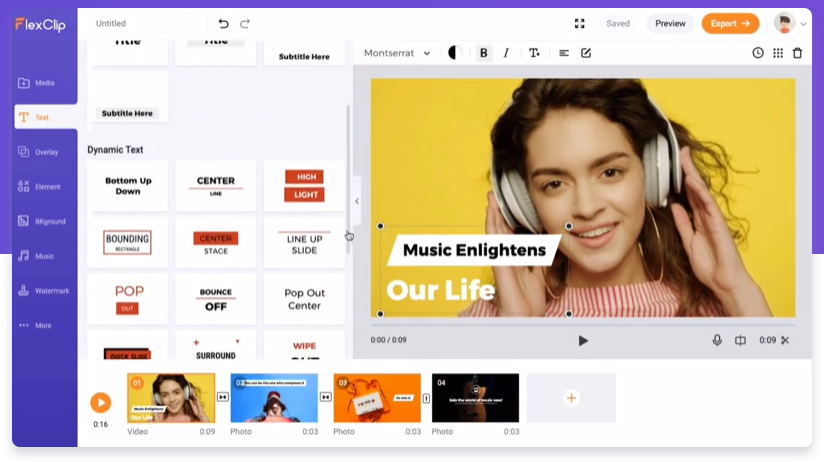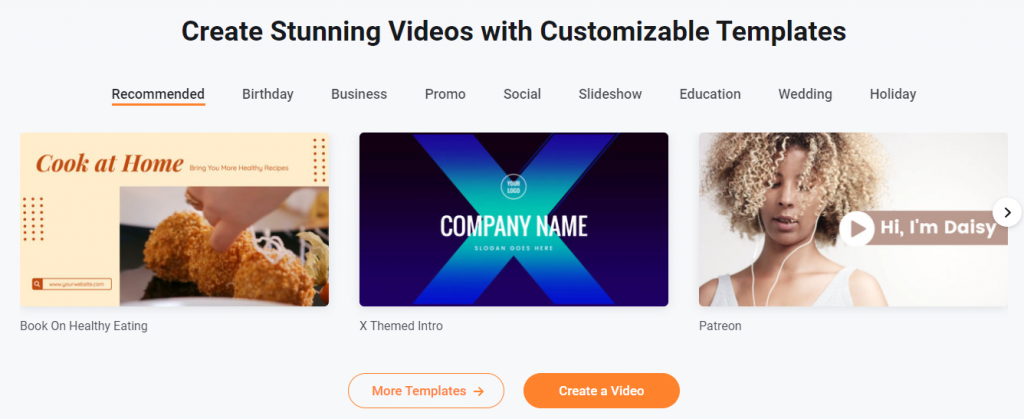Want the best mobile proxies? Read on!
In today’s digital age, mobile devices have become many people’s primary means of accessing the internet.
Mobile devices offer convenience and flexibility when browsing, connecting on social media, conducting online research, or accessing geo-restricted content. However, browsing on mobile devices also comes with challenges, such as security checks and IP restrictions.
This is where mobile proxies come into play. This article will explore the best mobile proxy providers in 2025, their features, pricing, and how they can enhance your mobile browsing experience.
Table of Contents
What Are Mobile Proxies?
Mobile proxies are proxy networks that use real 3G/4G connections assigned to individuals by their mobile carriers. These proxies are different from traditional ones, typically based on fixed IP addresses.
A mobile proxy network allows users to access the internet through the IP addresses of mobile devices, providing a higher level of anonymity and security.
This is particularly useful for web scraping, data mining, and social media management, where maintaining multiple accounts and avoiding detection is important.
One of the advantages of mobile proxies is that they offer a higher level of trustworthiness compared to other types of proxies.
Since they use real mobile connections, it is difficult for websites and services to detect and block these proxies. This makes them ideal for accessing geo-restricted content or for bypassing IP-based restrictions.
Mobile proxies also offer better performance compared to traditional proxies. Using 3G/4G connections ensures faster internet speeds and lower latency, resulting in a smoother browsing experience.
Why Use Mobile Proxies?
Before we dive into the best mobile proxy providers, let’s understand why using mobile proxies can be beneficial. Mobile proxies act as intermediaries between your mobile device and the websites you visit, providing a layer of anonymity and security.
Here are some key advantages of using mobile proxies:
- Bypassing Security Checks: Some websites implement security checks that can be difficult to bypass when accessing them from a mobile device. Mobile proxies can help you overcome these checks by masking your IP address and providing a new one associated with a mobile network.
- Accessing Geo-Restricted Content: Mobile proxies allow you to access content restricted to specific geographic regions. You can bypass geo-restrictions and access the content you need by routing your internet traffic through a mobile proxy with an IP address from the desired location.
- Enhancing Online Privacy: Mobile proxies add an extra layer of privacy by hiding your real IP address and replacing it with a mobile IP address. This makes it harder for websites and services to track your online activities and collect personal information.
- Automating Workflows and Data Scraping: Mobile proxies are valuable tools for automation and data scraping. They enable you to gather data from websites without being detected or blocked, making them ideal for market research, web scraping, and other online activities that require multiple requests.
Now that we understand the benefits of using mobile proxies, let’s explore the best providers in the industry and what they have to offer.
Top Proxy Service Providers In 2025
Best Featured Mobile Proxy Service Providers – EDITOR’S CHOICES
1. Oxylabs – Best for Enterprise-Grade Mobile Proxies
Oxylabs is a prominent provider of mobile proxies known for integrating the latest technologies and a stable proxy pool. They offer various services, including 3G/4G mobile, residential, and datacenter proxies.
Features
- Advanced Dashboard with Usage Statistics: Oxylabs provides an intuitive dashboard with detailed usage statistics and control over your proxies, allowing you to monitor and optimize your activities.
- Evergrowing Proxies Pool: With over 175 million residential proxies and a comprehensive pool of 5G/4G/3G/LTE mobile proxies, Oxylabs ensures you have a wide range of options to suit your needs.
- No Restrictions or Limits Imposed: Oxylabs provides unlimited bandwidth and removes any restrictions on the number of requests or concurrent connections you can make.
- High Uptime Rate at 99.99%: Oxylabs guarantees a high uptime rate, ensuring your connections remain stable and uninterrupted.
Pricing
Oxylabs offers flexible subscription-based plans to cater to different user requirements. Their starter plan starts at $5.7/GB monthly and includes 20 GB of traffic. They also offer a 30% discount for first-time customers for better cost savings.
Pros
- Reliable network and customer support
- Extensive pool of mobile proxies
- Sticky sessions with unlimited targets
- Free advice and a dedicated account manager
Cons
- Corporate-level prices on all plans
Best For:
- Enterprises needing high-volume data extraction
- Market research, SEO tracking, and competitive analysis
- Businesses requiring a legally compliant proxy solution
2. Decodo – Best for User-Friendly and Scalable Mobile Proxies
Decodo (formerly Smartproxy) perfectly balances performance and affordability, making it a great choice for businesses and individual users. With easy-to-use tools, a massive IP pool, and high-speed proxies, Decodo is a top option for reliable proxy services without breaking the bank.
Key Features:
- 65 million+ IPs across 195+ locations
- <0.3s average speed with 99.99% uptime
- Residential Proxies with 55M+ IPs (Use code DECODO30 for 30% off – Limited Time Offer)
- Free trials available for all other proxy products
- Supports HTTPS and SOCKS5 protocols
- Easy setup with an intuitive dashboard
- 24/7 customer support with 40s average response time
Best For:
- Small to mid-sized businesses needing scalable proxy solutions
- Social media management, ad verification, and automation
- Users looking for a simple yet powerful proxy service
3. Webshare – Best for Cost-Effective and Customizable Proxy Solutions
Webshare is an excellent option for users who want full control over their proxy usage at an unbeatable price. With its flexible plans, high-performance proxies, and generous free-tier options, Webshare is ideal for developers, startups, and budget-conscious businesses.
Key Features:
- Highly customizable proxy plans tailored to your needs
- Free proxies available with upgrade options
- Fast speeds and secure connections
- Pay-as-you-go pricing with no hidden fees
Best For:
- Developers and individuals needing customizable proxy solutions
- Startups and small businesses looking for budget-friendly options
- Users who want a mix of free and premium proxy services
Best Mobile Proxies
1. Proxidize
Proxidize is a mobile proxy provider for users who want speed, control, and infrastructure-level access. Proxidize Proxies are high-trust, US-based 4G LTE and 5G proxies with full rotation controls, HTTP(S) and SOCKS5 support, and unlimited concurrency. Available as monthly subscriptions or per-GB data packages.
Features
- 4G LTE and 5G US mobile proxies
- Supports HTTP(S) and SOCKS5
- 5–25 Mbps — up to 100 Mbps burst speeds
- Rotate IPs on-demand or on timer
- Monthly or per-GB billing
- Up to 50 US locations, city-targeting available
- 99.9% uptime, no concurrency limits
Pricing
- $59/month per proxy (unlimited data under fair use)
- $1/GB with rollover-enabled data bundles
- Enterprise options available
Pros
- UDP over SOCKS support
- Great for high-volume needs
- Per proxy/per GB pricing model
- Hosted on Proxidize hardware
- Excellent customer support
Cons
- Only US proxies available
- Smallest per-GB package is 100GB
2. Live Proxies
Live Proxies offers advanced rotating mobile proxies tailored to meet the needs of businesses and individuals requiring high anonymity, reliable connections, and dynamic IPs sourced from mobile carriers such as 3G, 4G, and 5G networks.
These proxies are ideal for tasks such as mobile app testing, social media management, ad verification, and geo-targeted market research.
Key Features:
- Dynamic IP Rotation – Automatic rotation of IPs at set intervals or upon request to prevent detection and blocking.
- Sticky Sessions – Allows users to maintain the same IP address for up to 60 minutes for session continuity.
- High Anonymity – Real mobile carrier IPs ensure a high trust score and minimize detection risks.
- Global IP Pool – Access IPs from multiple countries, ensuring effective geo-targeting and location-specific tasks.
- Fast & Reliable Connections – Low latency and stable performance, making them suitable for real-time data processing.
Pros:
- Wide variety of proxy types to suit different needs.
- Customizable plans for flexibility.
- High anonymity and reliable performance.
- Responsive and helpful customer support.
Cons:
- Limited location options compared to some competitors.
- Some advanced features may cater more to enterprise needs.
Why Choose Live Proxies?
Live Proxies stands out for its reliable, high-speed rotating mobile proxies and flexible session management, offering tailored solutions for a diverse range of use cases. With advanced technology and private IP allocation, it ensures maximum anonymity and performance, making it a preferred choice for high-stakes tasks.
==>> Get Live Proxies
3. ProxyShare
ProxyShare is a leading mobile proxy provider known for its high-performance 4G and LTE proxies. Trusted by marketers, developers, and researchers alike, ProxyShare delivers a reliable and secure solution for web automation, data collection, and geo-targeted campaigns.
With a strong emphasis on speed, stability, and global coverage, ProxyShare ensures users can scale their projects without interruptions or IP restrictions.
Features
- Extensive Global Mobile Network: ProxyShare provides mobile IPs in dozens of countries, enabling precise geolocation targeting for a wide range of use cases.
- Fast and Stable 4G/LTE Connections: Enjoy low-latency, high-speed mobile proxies designed for seamless automation and scraping tasks.
- Seamless Dashboard & API Integration: Manage proxies effortlessly with ProxyShare’s intuitive dashboard or integrate directly via API for automated workflows.
- Flexible Authentication: Choose between username/password or IP whitelist authentication for secure and convenient access.
- Unlimited Concurrent Connections: Run multiple threads simultaneously to maximize efficiency in data gathering and web testing.
Pricing
ProxyShare offers scalable pricing plans to cater to various needs. Starter packages typically begin at $125 per month, offering 50GB of mobile traffic. Enterprise-level plans, on the other hand, accommodate larger traffic volumes and custom requirements.
ProxyShare strikes a balance between affordability and premium performance, making it suitable for both small teams and large-scale operations.
Pros
- Reliable and fast mobile proxy network
- Broad global coverage for geolocation targeting
- User-friendly dashboard and robust API
- Flexible authentication options
- Supports unlimited concurrent connections
Cons
- Smaller proxy pool compared to some major providers
- Entry-level plans may have limited bandwidth
- Advanced management tools are more limited than competitors
==>> Get ProxyShare
4. Croxy
Croxy is a next-level IP proxy service built for speed, anonymity, and limitless web access. Whether you’re scraping data, managing multiple social accounts, or bypassing geo-restrictions, Croxy delivers ultra-fast, secure, and completely undetectable connections—anywhere in the world.
Features
- Global residential, mobile, and datacenter IPs
- High-speed HTTP(S) & SOCKS5 support
- Automatic IP rotation or sticky sessions for total flexibility
- City-level targeting for precise geo-location tasks
- Low-latency, high-reliability connections
- Flexible monthly or pay-as-you-go plans
- 99.9% uptime with unlimited concurrent threads
Pricing
- $49/month per proxy — unlimited data under fair use
- Pay-as-you-go: $0.90/GB with rollover-enabled bundles
- Custom enterprise plans for heavy-duty users
Pros
- Multi-type proxy network for every use case
- Ultra-reliable speed and performance
- Full global coverage with precise location targeting
- Easy-to-use dashboard + API integration
- Expert support team ready to assist
Cons
- Some advanced features reserved for enterprise plans
- Mobile proxies limited in certain regions
Why Choose Croxy?
Croxy is the ultimate tool for anyone who refuses to be blocked, slowed down, or tracked online. With lightning-fast IP rotation, high anonymity, and worldwide coverage, Croxy gives you the freedom to access the internet your way—secure, fast, and unstoppable.
==>> Get Croxy
5. Globalbyte
Globalbyte is a proxy provider that focuses on offering high-quality 5G & 4G mobile proxies ideal for social media management, automation, web scraping, and other use cases.
We do offer locations for the USA (New York, Texas, and Miami), the United Kingdom, Austria, Israel, and Portugal.
Features
- Raw 5G Proxies: Deliver unmatched reliability and clean, high-trust traffic ideal for automation, scraping, and account management.
- Real Mobile IPs with 100–400 Mbps Speed Performance: Enjoy real mobile IPs powered by fast 5G/4G networks, delivering 100–400 Mbps speeds for smooth, efficient, and high-performance operations.
- Unlimited Data: Operate at scale with truly unlimited bandwidth—no caps, throttling, or hidden restrictions.
- Rotating: Benefit from automatic, seamless IP rotation that helps maintain anonymity, avoid blocks, and mimic real user behavior.
- Support 24/7: Receive continuous, 24/7 expert support, ready to assist with setup, troubleshooting, and optimization whenever you need it.
Pricing
- Globalbyte pricing starts at $74 for non-US proxies and $92 for US proxies.
Pros
- High-Quality real mobile IPs
- Support 24/7 and 3-Day Refund Policy
- 3-day trial for only $3
Cons
- For now, only limited to the HTTP Protocol
- Limited regional options and geo-targeting features
==>> Get Globalbyte
6. Bright Data
Bright Data, formerly known as Luminati Networks, is one of the pioneering companies in mobile proxies. Thanks to their extensive network and ethical business practices, they have established themselves as one of the most popular providers.
Features
- Largest and Fastest 3G/4G Mobile Proxy Network: Bright Data boasts a network of over 75 million IP addresses spanning nearly every country in the world. This ensures a wide range of options for geolocation targeting.
- Network Uptime Guaranteed at 99.99%: Bright Data ensures the highest level of reliability with their network, minimizing downtime and ensuring uninterrupted access.
- Unlimited Concurrent Connections: With Bright Data, you can send an infinite number of concurrent requests, enabling efficient automation and data gathering.
- API Integration for 3G/4G and LTE Mobile Proxies: Bright Data offers easy integration with its mobile proxies through an API, enabling seamless integration into your workflows.
Pricing
Bright Data offers various pricing plans tailored to different needs. Their starter package includes 17 GB of traffic for $500 monthly, with additional packages available for larger enterprises. While their prices may be considered expensive, the reliability and quality of their service make them worth the investment.
Pros
- Extremely reliable network
- Largest mobile proxy pool
- 24/7 friendly and helpful support
- Custom proxy manager for all plans
- Pay-as-you-go plans are available
Cons
- Expensive starter plans
- No refund policy
7. The Social Proxy
The Social Proxy specializes in providing proxies for social media management and automation. They offer a range of mobile proxies in countries such as Austria, the United Kingdom, Germany, Israel, and more.
Features
- High-Quality 4G and 5G Mobile Proxies: The Social Proxy ensures high-quality mobile proxies sourced from their own 4G and 5G devices, guaranteeing speed, reliability, and security.
- Unlimited Bandwidth and Automatic IP Rotation: Enjoy seamless browsing with unlimited bandwidth and automatic IP rotation, minimizing the risk of detection and blocking.
- Responsive Customer Support and 3-Day Refund Policy: The Social Proxy offers responsive customer support and a 3-day refund policy, providing users with peace of mind.
- Limited Location Support with the Option to Switch Locations: While The Social Proxy supports limited locations, users can switch between supported locations twice a month.
Pricing
TheSocialProxy offers a simple pricing model, with 4G proxies priced at $89 per proxy port and 5G proxies priced at $119 per proxy port. They also provide a free trial for new users to test their service before committing.
Pros
- High-quality and fast mobile proxies
- Unlimited bandwidth and automatic IP rotation
- Straightforward pricing model
- Responsive customer support and a 3-day refund policy
- Free trial for new users
Cons
- Limited location support and geo-targeting
- IP authentication is not supported
8. Proxy-Cheap
Proxy-Cheap balances quality and affordability, making them an attractive option for those on a budget. They provide EU and US-based proxies at competitive prices.
Features
- Unlimited Bandwidth on All Plans: Proxy-Cheap offers unlimited bandwidth on all their plans, ensuring you can browse and automate without restrictions.
- Proxies from Real SIM Cards: Proxy-Cheap sources their proxies from real SIM cards, enhancing their reliability and reducing the chances of being detected or blocked.
- Dedicated Proxy Ports: With dedicated proxy ports, Proxy-Cheap ensures you have dedicated resources for browsing and automation.
- Support for All Protocol Types: Proxy-Cheap supports all protocols, ensuring compatibility with a wide range of software and applications.
Pricing
Proxy-Cheap offers affordable pricing plans, with options for US mobile proxies starting at $50 per month and EU mobile proxies ranging from $50 to $80 per month, depending on the country. They also provide an enterprise plan for businesses starting at $500 monthly.
Pros
- The most competitive prices on the market
- IPs from popular mobile carriers
- Unlimited bandwidth with no restrictions
- Advanced security and privacy
- Extremely easy setup and management
Cons
- Limited geo-targeting
- Speed limitation on entry-level plans
9. ProxyLTE
ProxyLTE specializes in LTE mobile proxies, offering a trusted service primarily based in the United States. While their proxies are limited to the US, they offer a premium service that focuses on ethical business practices.
Features
- Customizable Proxy Selection: ProxyLTE allows users to customize their proxy selection, including choosing between SOCKS5 or HTTPS, selecting the connection type (cellular, WiFi, or both), and specifying the period, state, and number of proxies required.
- Clean Proxies with Encrypted Traffic: ProxyLTE provides clean proxies with encrypted traffic, ensuring the security and privacy of your online activities.
- Continuously Expanding Network: ProxyLTE’s network continually expands, increasing the number of available IP addresses and enhancing overall service quality.
Pricing
ProxyLTE offers flexible pricing based on the number of proxies required. Users can purchase a minimum of 25 proxies for $225 per month, with options for weekly and daily subscriptions available. They also offer social proxies at similar prices, allowing users to purchase specific amounts according to their needs.
Pros
- Customizable proxy selection
- Clean proxies with encrypted traffic
- Continuously expanding network
- Ideal for multi-accounting and web scraping
- Flexible subscription-based payment system
Cons
- Limited to US-based proxies
- A small pool of IPs compared to other providers
10. Rayobyte
Rayobyte is a premium provider of 4G mobile and DSL/cable proxies based in the United States. They have gained a reputation for their ethical business practices and reliable network.
Features
- Access to Over 750,000 Mobile IPs: Rayobyte provides access to over 750,000 mobile IP addresses spread across the United States, enabling precise geolocation targeting.
- Exclusive Targeting of Specific Locations: Rayobyte enables users to target specific locations exclusively, making it ideal for those who require precise location targeting.
- Transparent Pricing and Excellent Customer Support: Rayobyte offers transparent pricing and excellent customer support, ensuring a seamless experience for its users.
Pricing
Rayobyte offers two packages for their mobile proxies, starting at $150 per month for their basic plan and $250 per month for their premium plan. The pricing is based on the number of concurrent connections required.
Pros
- Ethically-sourced residential and mobile IPs
- Exclusive targeting of specific locations
- Transparent pricing and excellent customer support
Cons
- Limited to the United States
- A small pool of IPs compared to other providers
11. Airproxy
Despite its name, Airproxy offers 3G and 4G mobile proxies, making it a versatile option for mobile browsing and automation.
Features
- Wide Range of Mobile Proxies: Airproxy offers a diverse range of 3G and 4G mobile proxies, providing flexibility in selecting the most suitable option.
- Multiple Locations: Airproxy provides proxies in various locations, allowing users to select the one that best suits their needs.
Pricing
Airproxy’s pricing varies depending on the number of proxies and the desired location. Users can contact Airproxy to inquire about pricing options and customize their plans accordingly.
Pros
- A wide variety of mobile proxies
- Multiple locations available
Cons
- Pricing information not readily available
12. Froxy
Froxy offers a range of features in its mobile proxy service, making it a versatile choice for various online activities.
Features
- Wide Variety of Features: Froxy offers a comprehensive range of features, including unlimited bandwidth, automatic IP rotation, and high-quality proxy speeds.
- Location Support: Froxy supports multiple locations, enabling users to select the most suitable one.
Pricing
Froxy’s pricing varies depending on the desired location. However, they charge an additional 20% for proxies outside Moscow. Users can contact Froxy directly for more pricing details.
Pros
- A wide variety of features
- Wide selection of supported locations
Cons
- Additional charge for proxies outside Moscow
Factors To Consider When Choosing The Best Mobile Proxies
When selecting the best mobile proxies, several key factors should be taken into consideration.
Firstly, evaluating the speed, data limits, number of IPs, and server reliability is important. Mobile proxies should provide fast and reliable connections to ensure smooth browsing and data transfer. Additionally, consider the data limits and make sure they align with your usage requirements.
Secondly, security is a major factor when choosing a mobile proxy provider. Look for providers that offer high levels of security and encryption to protect your data and ensure anonymity. It is also important to choose a provider that offers 24/7 customer support and a money-back guarantee in case of any issues or dissatisfaction.
Furthermore, consider the type of proxy you need – shared or dedicated. Shared proxies are more cost-effective but may have slower speeds and reduced reliability due to the presence of multiple users. On the other hand, dedicated proxies offer exclusive use and better performance but can be more expensive.
Geographic location is another important factor to consider. Depending on your needs, you may require proxies from specific locations to bypass geo-restrictions or access region-specific content. Make sure the provider offers proxies from the desired locations.
Lastly, consider the cost of the mobile proxies. While finding a provider within your budget is important, prioritizing quality and reliability over price is also crucial. Cheaper proxies may compromise on speed, security, and customer support.
In conclusion, when selecting the best mobile proxies, several key factors must be carefully considered, including speed, data limits, security, customer support, proxy type, geographic location, and cost. By evaluating these factors and finding a balance that suits your needs, you can select the most suitable mobile proxy provider for your requirements.
Best Mobile Proxies: Frequently Asked Questions
What are mobile proxies?
Mobile proxies are IP addresses assigned to mobile devices, such as smartphones or tablets, rather than traditional static IP addresses. These proxies enable internet access through mobile networks, providing unique IP addresses that can be utilized for various purposes, including web scraping, online anonymity, and bypassing IP-based restrictions.
How do mobile proxies work?
Mobile proxies work by routing your internet traffic through mobile devices’ connections and networks. They act as intermediaries between your device and the websites or online services you’re accessing. This can help you appear to be accessing the internet from various locations, enhancing anonymity and overcoming restrictions.
What are the advantages of using mobile proxies?
- Anonymity: Mobile proxies provide anonymity, as your internet traffic appears to originate from the IP address of a mobile device.
- Bypassing Restrictions: They can help bypass IP-based restrictions or blocks, especially when certain IPs are banned or limited.
- Location Diversity: Mobile proxies can provide IP addresses from different geographical locations, which is useful for tasks such as localized testing or accessing restricted content.
- Less Suspicion: They are less likely to be detected as proxies by websites, as they resemble regular mobile device connections.
What are the limitations of mobile proxies?
- Speed: Mobile proxies may have slower speeds than traditional data center proxies due to the inherent limitations of mobile networks.
- Reliability: The availability of mobile proxies can vary, as they depend on the availability of mobile devices and their connections.
- Cost: Obtaining access to mobile proxies can be more expensive than traditional proxies, as it involves using real mobile devices.
How are mobile proxies acquired?
Mobile proxies can be obtained through specialized providers that offer access to their mobile device pool and its associated IP addresses. These providers may have mobile apps or software that allow you to route your traffic through their mobile network.
What are common use cases for mobile proxies?
- Web Scraping: Mobile proxies can be used for scraping data from websites without triggering IP bans.
- Sneaker Botting: In the sneaker resale industry, mobile proxies can help users access sneaker release websites from multiple IPs to increase the chances of buying limited releases.
- Social Media Management: Mobile proxies can be used to manage multiple social media accounts while appearing to be from different locations.
- Ad Verification: They can be employed to verify ads and content delivery from various geographic locations.
Conclusion
Choosing the best mobile proxy provider depends on your specific needs and budget. Among all the above-mentioned reputable providers, Oxylabs is the best mobile proxies provider among them.
When making a decision, consider factors such as network reliability, IP pool size, pricing, and customer support. With the right mobile proxy provider, you can easily unlock faster and more secure mobile browsing, access geo-restricted content, and automate your workflows.
Mobile proxies are valuable tools for enhancing online privacy and bypassing restrictions. Choose the best provider that aligns with your requirements, and enjoy a seamless and secure mobile browsing experience.
INTERESTING POSTS
- The Advantages Of Mobile Proxies
- The Best Datacenter Proxies
- 4 Differences Between Residential Proxies and Datacenter Proxies
- Top Proxy Service Providers in 2025: Unlocking Internet Freedom
- Best Residential Proxies In 2025: A Comprehensive Guide
- Buy Proxy: The Ultimate Guide To Choosing The Best Proxy Service in 2025
- Online Privacy – Why It’s Important And How To Protect It


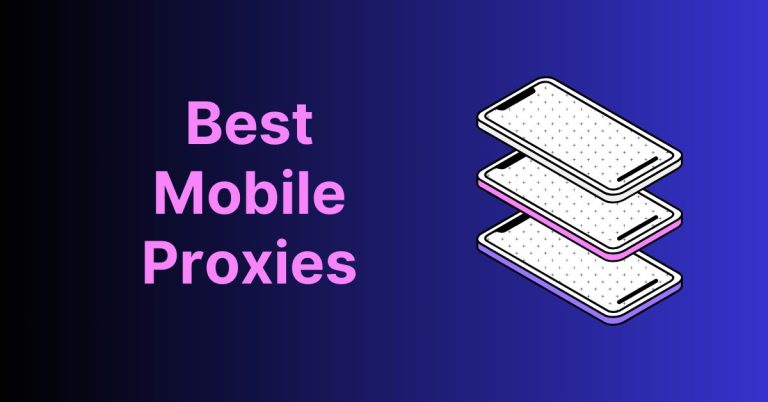






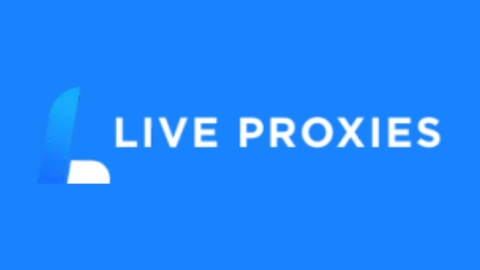







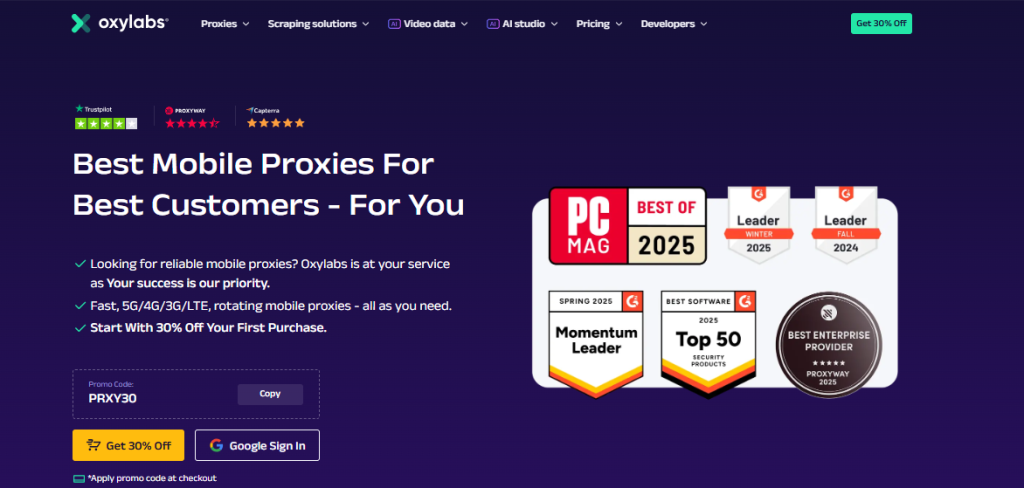



















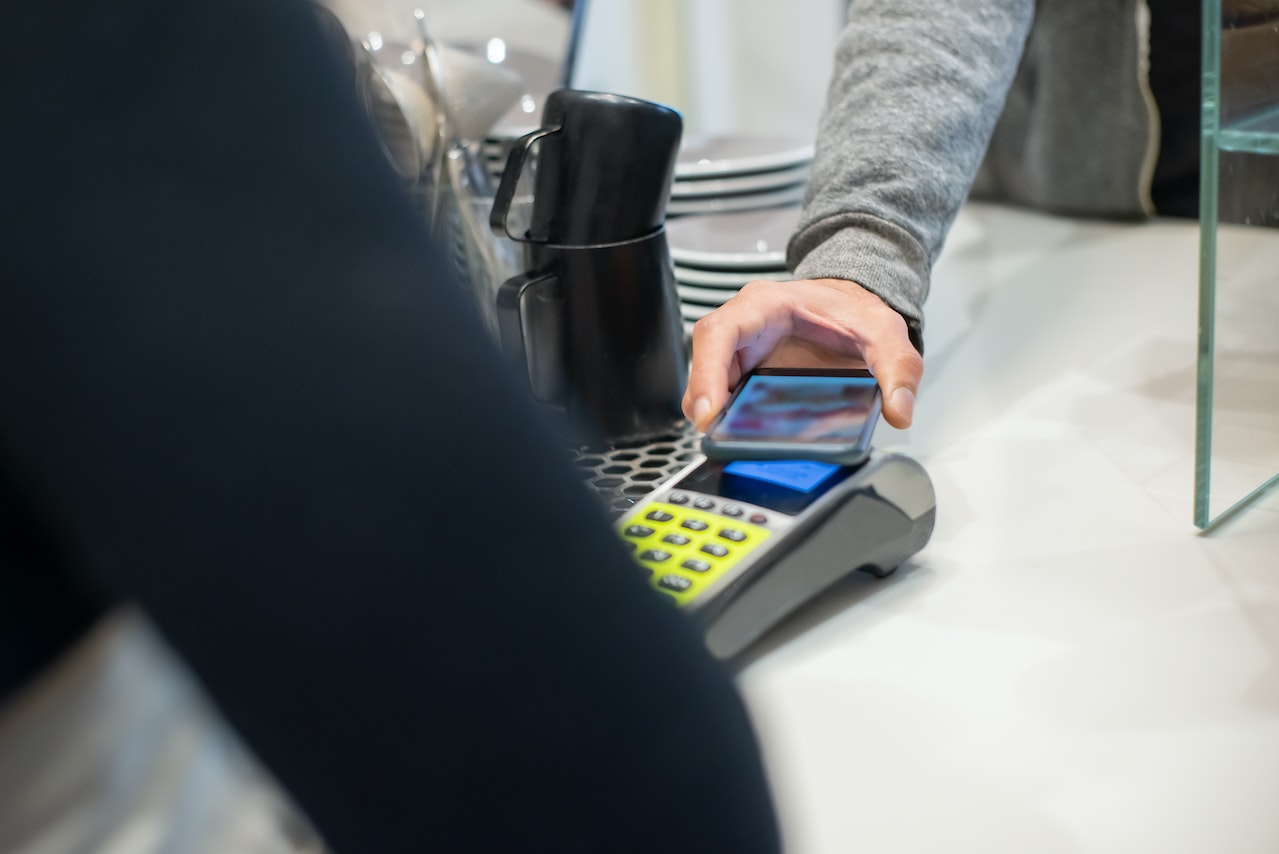












![The Unbiased FlexClip Review [SecureBlitz’ SECRET Tool] The Unbiased FlexClip Review [SecureBlitz’ SECRET Tool]](https://secureblitz.com/wp-content/uploads/2021/02/The-Unbiased-FlexClip-Review-SecureBlitz-SECRET-Tool-768x402.png)
